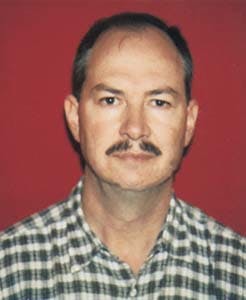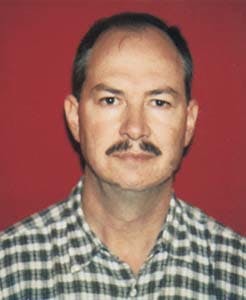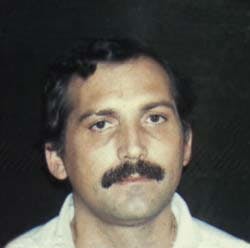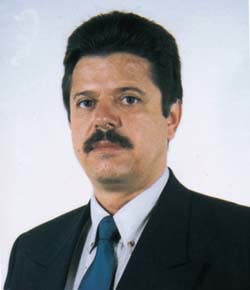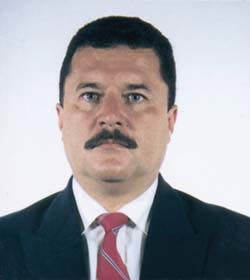Jaime Barrientos, Giovanni Bottazzi,
Alberto Fernandez, Guillermo Barboza
Hydrocarbons Directorate, Ministry of Environment and Energy
San Jose, Costa Rica
The hydrocarbon exploration data base in Costa Rica, gathered through various recent periods, indicates promising hydrocarbon potential in the country.
During 1980-94, Recope SA, the state petroleum company, performed a series of studies to evaluate the petroleum potential in the whole Costa Rican territory. As a first step, the information compiled during previous studies was re-evaluated, and later new information was collected with the aid of foreign governments and cooperating institutions.
The existing data base of Costa Rica now includes well information collected in the first three quarters of this century by Sinclair, Union, Gulf, and Elf, and by Pemex and Petro-Canada in the most recent period. It includes well logs and rock samples; 6,780 km of regional and semidetailed marine and onshore seismic surveys; high resolution aeromagnetic and gravity data.
Geochemical analyses of oil seeps, soil, gas, and drilling samples, and outcrops were carried out in order to determine the potential of the source rock. Reservoir rock potential has been confirmed through petrographical analyses.
A new exploratory era began with the Costa Rican Congress' approval in 1994 of the Hydrocarbon Law, which allows private companies to participate in hydrocarbon exploration and exploitation. Industrial analysts consider this a modern and attractive law that can help stimulate private investment.
The first bidding process based on this law is taking place in 1997 (OGJ, Feb. 17, 1997, p. 30).
This article brings together some highlights about Costa Rica oil potential and gives basic information on future hydrocarbon exploration and development under the regulation of the new Hydrocarbon Law.
Introduction
Costa Rica's geocientific data base began with the development of a large surface geology work initiated in the last century by foreign researchers. Since then, relatively abundant geophysical and geological information has been gathered.
The Costa Rican region is the result of an intraoceanic convergence system, developed since Upper Cretaceous time. Along with the south of Nicaragua and the Panama territory, it constitutes the isthmus of southern Central America, whose basement is the thickened oceanic crust of the western part of the Caribbean Plate.
From the tectonics point of view, the Costa Rican isthmus is bisected by an E-W transcurrent fault system. In the morphologic sense, the northern segment is divided by an active volcanic range, which separates a forearc region and a backarc region. The southern segment, of a more conspicuous relief, is separated by a magmatic arc and two deformation belts, one in the forearc and the other in the backarc.
In this island arc system, more than 40,000 sq km of sedimentary basins of varied lithologies and structures have developed. Sandstone facies can change from lithic wackes to mature quartz sandstone. It is rich in thick clastic lithologies of turbiditic fan, and a cyclically developed biohermal at least in six events since Upper Cretaceous.
There are some characteristics that are especially attractive for petroleum exploration:
- At least four known stratigraphic levels of black shales, very rich in organic matter, each correlated with Jurassic and Cretaceous anoxic events (OAE).1 In particular, the OAE-2 displays shale strata, extremely rich in organic matter (up to 54% total organic carbon, kerogen I and II) from the Cenomanian-Turonian age. These are found towards the upper part of the basement (Nicoya complex), and suggest regional extension.
- Numerous stratigraphic traps linked with facies change associated with a very dynamic depositional environment. Evidences of this are the parasequence systems composed by deltaic systems over fan successions of deepwater facies, and coastal prograding facies over carbonate platform systems and covered by fine-grained volcaniclastic successions.
- Thick basin fills characterized by structural styles that are favorable to trap development, associated to tectonic unconformities, tilted blocks, and fold and fault systems.
- Presence of oil and gas seeps in the Pacific and the Caribbean basins.
- A modern geological and geophysical data base including seismic reflection data, well logs, and detailed knowledge of the sedimentary successions and sequence stratigraphy.
- Availability of qualified professionals, and suitable and efficient environmental regulations, as well as modern hydrocarbon legislation.
Tectonic framework
Costa Rica is located at the eastern border of the Caribbean plate, which was probably formed as a part of the Farallon plate (nowadays Nazca and Cocos plate) in the Pacific during the Upper Jurassic.
The development of the sedimentary basins can be related to the diverse movements of the tectonic plates, starting in the late Cretaceous and continuing into the present. The main tectonic features recognized in this margin2 include:
a) the Middle American Trench,
b) the Panama Fracture Zone,
c) the Hess Escarpment,
d) the Panama Deformed Belt, and
e) the shallow subduction of the Cocos Ridge beneath the southern part of Costa Rica.
These tectonic features have produced two generations of sedimentary basins in Costa Rica. The first generation consists of the classical basin systems of intraoceanic island arcs: the trench-slope, forearc, and backarc basins. The second generation of basins originated in the Upper Eocene to Lower Oligocene by local tectonic phenomena of transtensional type.
Four important geodynamic events on the Caribbean plate determined Costa Rica's geological evolution:
- Subduction of oceanic crust beneath the western margin of the Caribbean plate in the early Cretaceous.
- Thickening and buoyancy of the Caribbean plate in the Santonian-Campanian.
- Main convergence of the North and South American Plates beginning in the Upper Eocene-Lower Oligo- cene, which intensified the narrowing of the Caribbean plate.
- Collision of the Panama block with South America in the Mid-Miocene-Early Plio- cene.2
This complex interaction of plates is associated with clockwise rotation, shearing stress, and a strike-slip fault system that affected the tectonic pattern in Costa Rica.
Sedimentary basins
The studies carried out so far have defined at least six basins with petroleum potential ( Fig. 1 [58411 bytes]). The boundaries of each basin, although arbitrary, are in general based on existent tectonic elements.
Tempisque is the northwest forearc basin, bounded by the volcanic arc (Guanacaste Range) to the northeast and by the Nicoya Complex outcrops to the southeast. In the north, the boundary is defined by the Nicaraguan border and in the south by the Costa Rican Transcurrent Fault.
Nicoya-Quepos, in the Pacific coastal area, is located between the Costa Rican Transcurrent Fault to the north and the Quepos arc to the south. An intermediate arc, El Alto de Herradura divides these depocenters into two sub-basins: Nicoya graben and Parrita basin.
Terraba is the southeast forearc basin, bounded to the northeast by the Talamanca uplift and to the southeast by a prominent strike-slip fault that separates the Terraba basin of the slope and the external arc.
Lim?n Sur, in the southeast, is bounded by the Talamanca highlands to the southeast, and extends in the northeast into the marine region of the Caribbean. To the south, it is bounded by Panama. Its northern edge is defined by the internal deformation belt.
Limon Norte, in the northeast, extends from the Lim?n Sur basin to the offshore region and the Nicaragua border. El Alto de Sarapiqu! delimits the basin on the western side and separates (sets off) the San Carlos basin. This is essentially a passive basin of Neogene age overlying Miocene formations which occur in the South Limon basin. El Alto de Moin is considered part of the South Limon basin.
San Carlos, in the central northern part, is situated in the backarc area, bounded in the southeast by the volcanic arc and separated from the North Limon basin by El Alto de Sarapiqui. The northern boundary is defined by the igneous basement and metamorphic rocks that crop out along the Nicaraguan border. The southern boundary is constituted by the central volcanic range.
Habitat and setting
Petroleum evaluation to the present, indicates that Costa Rica's sedimentary basins have good hydrocarbon potential, with elements of world class in the source rocks sampled in the Pacific margin, with total organic values exceeding 50% of kerogen type I and II (Fig. 2 [45656 bytes]).
In the Lim?n Sur basin, the significant petroleum recovery in one well, samples in others, and the existence of oil seeps are indicative of oil generation and migration. Productive layers are found in several horizons, outcrops and exploratory wells.
Besides, seismic profiles show numerous anticlinal structures, associated to thrust faults, and examples of potential prospects or "plays" can be found in the internal deformation basin, where quartz-rich sandstones of neritic affinity from the Upper Eocene to Mio- cene, as well as carbonate sandstones and detritic flows present characteristics of reservoir rock. Drilled wells in the external deformation belt have indicated that the sandstone is of distal character, with porosity around 20%, which suggests significant reservoir potential.
Seismic surveys in the Lim?n Norte basin divulge a Neogene sedimentary fill with a thickness up to 4 km that extends towards the offshore region in the northeast. A listric fault series and prograding sequences with elements similar to channels and bars suggest that an important delta complex infilled this basin (Fig. 3 [38679 bytes]). At a distance of about 100 km from the volcanic arc, it is expected that this delta complex could have a considerable amount of sand in depositional systems of plain and deltaic front.
The ramp type carbonates and bioconstructions in the flanks of Moin high offer additional opportunities still non-drilled (Fig. 2).
The San Carlos basin shows several characteristics of exploratory interest, but only two wells have been drilled there. Outcrops shows Mid-Miocene coquinas and calcarenites with porosities up to 15%. In the Venado area, there are shallow-marine sands of the Upper Miocene and Pliocene. In seismic sections, features associated to reefs as well as hydrocarbon indicators of the flat-spot type associated with anticlines, are interesting features in the southeastern part of the basin.
In the transtensional basins of the mid-Pacific offshore, Nicoya and Parrita-Quepos, the seismic profiles show faulted and rotated blocks, structures of graben and semigraben type and strike-slip faults, which provide a complex structural style with excellent trap components (Fig. 4 [39641 bytes]). The basin fill includes 1,500 m of cyclic sandstones of Miocene age, with shallowing upward sequences towards the top, sand coastal deposits and distributary mouth bars.
In the Tempisque forearc basin, Cretaceous bituminous shales with high total organic contents, in some cases higher than 50%, directly overlying the Nicoya Complex are considered a world class source rock. The potential of the reservoir rock is limited but includes rudistic limestones linked to the Barra Honda formation. They occur in turbiditic flows and sandstones linked to thick turbidites. The volcaniclastic character of the sandstones is an obstacle to the primary development of the porosity, but the porosity by fractures should not be neglected.
In the Terraba basin, the information is limited to some outcrops, a few shallow wells, and scarce seismic studies, which are insufficient to evaluate the basin. Nevertheless, petroliferous rocks may exist in basal bioclastics (Fila de Cal formation) and in sands of the upper part of a thick turbidite succession (T?rraba) and its Upper Miocene deltaic sands. One thing to take into account would be the predominance of volcaniclastics with limited amounts of quartz that could hinder the development of porosity. Source rock data indicate that Cretaceous bituminous rich shales are present in the southern region (Fig. 2).
Current opportunities
The Hydrocarbon Law of Costa Rica approved in 1994, provides the government with the legal, economic, and administrative framework to promote and encourage hydrocarbon exploration and development through contracts with companies with known technical and financial capacity and experience in the petroleum industry.
On the basis of this law, the Hydrocarbons Directorate of the Ministry of Environment and Energy was created, as the technical and administrative body, responsible for the process of formalizing and fulfilling contracts.
Bidding opened Feb. 14, 1997, and the ministry will receive offers until July 14, 1997. Twenty-five blocks (2,000 sq km maximum per block) are offered in the Limon region, San Carlos, Offshore Caribbean, and the Pacific margin (Fig. 5 [63421 bytes]). The maximum number of blocks per concessionaire is as follows:
- 9 offshore blocks
- 6 onshore blocks
- 8 blocks, if four offshore and four onshore.
The minimum work program includes seismic surveys and drilling of one exploratory well per year in each concession area, beginning in the second year.
The offers will be scored according to an evaluation system by points. Three aspects will be evaluated totaling 100 points: 10 by financial and operative capacity, 45 by exploratory effort and environmental bond, and 45 by royalties and reinvestment percentage. These three aspects will be reviewed, and the offer that achieves the highest total will be selected.
The concession could have a duration of 23-26 years, distributed between the exploration period (three or six years) and the production period (20 years).
In this first bidding, a modern concession contract will be applied. From an economic point of view, the concession contract is similar to the production sharing contract. The government grants the rights to conduct specific exploration and exploitation operations and the opportunity to regain costs and to make a profit from the resulting production. In return, the state receives royalties and income taxes (30%).
The minimum royalties are determined by law. Nevertheless, offers that include state benefits larger than those would be significantly higher rated.
References
1. Astorga, A., El Mesozoico del sur de Am?rica Central: consecuencias para el origen y evoluci?n de la placa Caribe, Profil 7, 1994, pp. 171-233. 2. Mann, P. and Burke, K., Neotectonics of the Carib- bean: Reviews of Geophysics and Space Physics, Vol. 22, 1984, pp. 309-362.Bibliography
Astorga, A. et al., Fern ndez, J.A., Barboza, G., Campos, L., Obando, J., Aguilar, A., and Obando, L.G., Cuencas sedimentarias de Costa Rica: Evoluci?n Cret cico superior Cenozoica y potential de hidrocarburos, Symposium on the Energy and Mineral potential of the Central American-Caribbean Region, San Jos?, Costa Rica, Mar. 6-9, 1989, Circumpacific Council.Astorga, A., Fern ndez, J.A., Barboza, G., Campos, L., Aguilar, A., y Obando, L.G., Cuencas sedimentarias de Costa Rica: Evoluci?n geodin mica y potencial de hidrocarburos. Revista Geol?gica de Am?rica Central, Vol. 13, 1991, pp. 25-60.
Barboza, G., Barrientos, J., Ballestero, L., Astorga, A., Bottazzi, G., Fern ndez, A., and Rojas, J.F., Petroleum Evaluation Report, an Emphasis on Organic Geochemistry and Seismic Interpretation, Pacific Margin of Costa Rica. Proyecto CAM-009, patrocinado por NORAD. Informe t?cnico para RECOPE, 1994.
Astorga, A., Barrientos, J., Bottazzi, G., Fern ndez, A. y Barboza, G., Nuevas Oportunidades de exploraci?n petrolera en Costa Rica; Revista Latinoamericanca, July 1996, Vol. 2, No. 3, 1996.
Bottazzi, G., Gonz lez, G., Fern ndez, J.A. and Barboza, G., Evoluci?n tectono-sedimentaria de la cuenca Lim?n Sur, Profil 7, 1990, pp. 351-91.
Fern ndez, J.A., Bottazi, G., Barboza, G., and Astorga, A., Tect?nica y estratigraf!a de Baja Talamanca y su relaci?n con el Caribe, Revista Geol?gica de America Central, Abril, 1994.
Rockwell, D.W., Interpretation of land and marine seismic data. Informe inadito propiedad de Recope, 1985.
Sheehan, C.A., Penfield, G.T., and Morales, E., Costa Rican geologic basins lure wildcatters, OGJ, April 30, 1990, p. 73.
Van de Kamp, P., Evaluation of stratigraphy, source rock potential, tectonics, structure, and reservoir potential for hydrocarbon exploration in Costa Rica, Informe tecnico Recope, 1985.
Western Atlas International Inc., Synthesis report on the hydrocarbon potential of Costa Rica, Informe exclusivo para Recope, 1988.
The Authors
Jaime Barrientos Chacon is a geophysicist at Recope. He worked for three years in drilling and field geophysics at ICE's Miravalles geothermal project. He joined Recope's oil exploration operations in potential fields processing and interpretation in 1980. He has participated in numerous seismo-stratigraphic and sedimentary basin evalua tion projects in Costa Rica and southern Nicaragua. He holds an MSc degree in geophysics from Texas A&M University and a BA in civil engineering from Technological Institute of Costa Rica.
Giovanni Bottazzi Basti joined Recope after obtaining a degree in geological sciences from the University of Costa Rica in 1986. He worked as a petroleum geologist specializing in sedimentology, a subject in which he has received continuing education at the University of British Columbia. He has participated in various exploration campaigns, mainly in the Limon Sur and San Carlos basins and in southern Nicaragua. He is conducting geothermal exploration in northern Costa Rica and is also a technical advisor for the Hydrocarbons Directorate of the Ministry of the Environment and Energy.
Alberto Fernandez is associate director of the Hydrocarbons Directorate of Costa Rica. He has worked in Recope since 1980 as an exploration geologist, later as manager of the geology department (1988-92), and until now as executive coordinator. Since 1994 he has also promoted hydrocarbon exploration and exploitation investment opportunities and concessions in Costa Rica. He obtained BA and MS degrees in geology from the University of Costa Rica and a master's in business administration from Universidad Interamericana of Costa Rica.
Guillermo Barboza Gutierrez is a geologist at the Hydrocarbons Directorate of Costa Rica. During 1982-84 he worked as an exploration geologist at Recope. He has been manager of the geology and geophysics department (1985-89) and executive coordinator (1989-95). Since 1996 he is technical advisor at the Hydrocarbons Directorate. For over a decade he has been involved in seismic interpretation of the Costa Rica and Nicaragua Pacific and Atlantic margins. From 1992-94 he was also project manager for both countries' Pacific coast exploration. He obtained a BA in geology from the University of Costa Rica and did postgraduate study at Continental Shelf Institute, University of Trondheim, Norway.
Copyright 1997 Oil & Gas Journal. All Rights Reserved.
